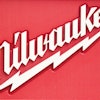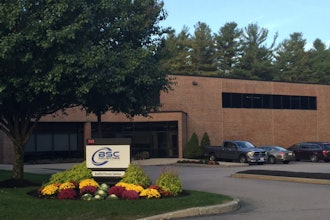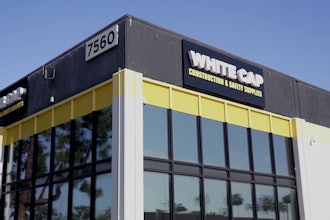The nation's economic stress fell to a two-year low in April, thanks to the strongest private-sector hiring in five years and a dip in bankruptcy filings, according to The Associated Press' monthly analysis.
The improved picture for jobs and bankruptcy filings offset a slight rise in foreclosures.
The easing of stress was felt most in Midwestern and mid-Atlantic states. But conditions brightened throughout the country: More than 90 percent of the nation's 3,141 counties were better off in April than in March.
Counties with heavy concentrations of workers in farming, retail and tourism benefited in particular. By contrast, counties with many workers in education and mining suffered the sharpest increases in stress.
The AP's Stress index calculates a score from 1 to 100 based on unemployment, foreclosure and bankruptcy rates. A higher score signifies more economic stress. Under a rough rule of thumb, a county is considered stressed when its score exceeds 11. By that standard, about a quarter of the counties were stressed in April, down from about a third in March.
The average county's Stress score was 9.8, the lowest since April 2009's score of 9.7. It was 10.5 in March and 11 in February. A year earlier, it was 10.5.
Nevada had the highest level of stress in April with a score of 19.36. Next were California (15.57), Florida (14.17), Arizona (13.78) and Georgia (13.38).
As it's been since the recession began in 2007, North Dakota was the least-stressed state, with a score of 3.88. It was followed by Nebraska (5.27), South Dakota (5.58), New Hampshire (6.38) and Vermont (6.39).
The nation's stress may have headed back up in May. A range of economic data showed the economy slowing last month, in part because of high gas prices. Consumers who have had to pay more for gas have had less money to spend on other goods and services — from furniture and appliances to restaurants and vacations.
On Friday, the government said the economy added a scant 54,000 jobs in May, the poorest showing in eight months. And the unemployment rate edged up from 9 percent to 9.1 percent. The question is whether the weakness will be a temporary setback, as was a similar economic slowdown last year, or something more chronic.
"We won't know for a few months," said Sal Guatieri, senior economist at BMO Capital Markets. "A lot will depend on whether gasoline prices moderate."
Guatieri has downgraded his forecast for growth for 2011 to a modest 2.5 percent. That's weaker than last year's 2.9 percent increase, and it's below the 3.2 percent Guatieri was forecasting before gasoline surged to near $4 a gallon.
"It took a big bite out of people's pocket books and their psyche," said Mark Zandi, chief economist at Moody's Analytics. "I think we will get back on track as the summer and fall progress, but that assumes that gasoline prices don't head higher."
Since peaking at $3.98 a gallon on May 6, gasoline has fallen by about 20 cents to a nationwide average of $3.77 a gallon, according to AAA's daily fuel gauge.
Over the past 12 months, stress has eased the most in two states that were among the hardest-hit during the recession: Michigan and Nevada. In both cases, the gains were driven by job growth, along with fewer foreclosures and bankruptcies.
Michigan benefited from manufacturing activity and hiring in health care in April. It outpaced the nation in its recovery during the January-March quarter. But so deep was Michigan's fall during the recession that a recovery is barely noticeable in some pockets of the state — places like Sanilac County, Mich.
That county's Stress score in April was a high 15.21, though down from 16.88 in March. Sanilac's wind-power industry is starting to take off, and wind mill construction jobs probably accounted for some job growth.
But not much.
"We're not seeing the housing market recover yet," said Kathy Dorman, the county treasurer. "There still are a lot of homes for sale, and the sales are very slow."
In Nevada, tourism has picked up in Las Vegas; 4,600 hotel and food service jobs were added in April. The state unemployment rate dropped to 12.5 percent in April, down from just under 15 percent in December.
Despite its year-to-year gains, Nevada endured the nation's worst scores in April in all three variables used in the AP Stress Map: The state had a foreclosure rate of just under 6 percent and a bankruptcy rate of 2.6 percent.
Over the past year, the Mountain states of Idaho and Montana have suffered the sharpest increases in stress . Both were late to enter the recession, which started in December 2007. They didn't really feel the effects of the downturn until mid-2008. Now, both are trailing the rest of the nation in recovering.
"We've hit the bottom," said Bob Fick, a spokesman for the Idaho Department of Labor. "But how long we're going to stay at the bottom is the real question. We're just flat — there is no growth out there."
The nation's most-stressed counties with populations of at least 25,000 were Imperial County, Calif. (stress score: 31.33); Yuma County, Ariz., (27.22); Lyon County, Nev. (25.93); Sutter County, Calif. (24.86); and Merced County, Calif. (24.23).
The least stressed were Ward County, N.D. (3.25); Ellis County, Kan. (3.55); Burleigh County, N.D. (3.55); Buffalo County, Neb. (3.94); and Arlington County, Va. (4.04).
___
Schneider reported from Orlando, Fla., Crutsinger from Washington.


















